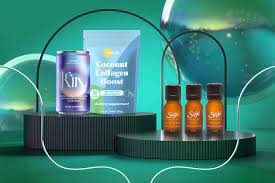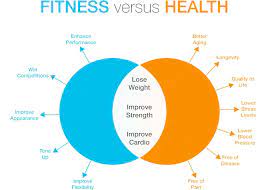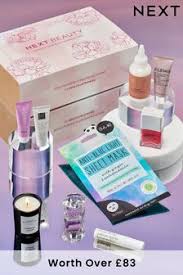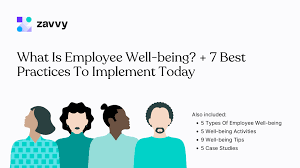Sustainability: Paving the Way for a Greener Future
In an era where environmental concerns are at the forefront, sustainability has become a crucial topic of discussion. It encompasses our responsibility to protect and preserve our planet for future generations. From reducing carbon emissions to promoting renewable energy sources, sustainable practices are essential in creating a greener and more sustainable future.
One of the key aspects of sustainability is reducing our carbon footprint. This involves minimizing greenhouse gas emissions through various means, such as energy-efficient technologies, waste reduction, and sustainable transportation options. By adopting these practices, we can significantly contribute to mitigating climate change and its adverse effects on our environment.
Renewable energy plays a vital role in achieving sustainability goals. Transitioning from fossil fuels to renewable sources like solar and wind power can help reduce reliance on finite resources while decreasing harmful emissions. Investing in clean energy not only benefits the environment but also stimulates economic growth and job creation in the renewable energy sector.
Another critical aspect of sustainability is responsible resource management. This includes conserving water, protecting biodiversity, and reducing waste generation. By implementing efficient water management strategies, such as rainwater harvesting and water recycling systems, we can ensure its availability for future generations.
Preserving biodiversity is equally important in maintaining ecological balance. Protecting natural habitats, promoting sustainable agriculture practices, and combating deforestation are all ways we can safeguard diverse ecosystems that support countless plant and animal species.
Waste reduction is another key element of sustainability. Adopting practices like recycling, composting, and embracing the principles of the circular economy can help minimize waste generation while maximizing resource efficiency. By reusing materials or repurposing them into new products through recycling initiatives, we reduce the strain on natural resources and decrease pollution levels.
Education plays a vital role in promoting sustainability awareness among individuals and communities. By raising awareness about the importance of sustainable practices through educational programs, workshops, and campaigns, we can empower people to make informed choices and take sustainable actions in their daily lives.
Businesses also have a significant role to play in driving sustainability. Adopting sustainable practices, such as implementing energy-efficient technologies, reducing waste, and embracing ethical sourcing, not only helps protect the environment but also enhances brand reputation and attracts environmentally conscious consumers.
Governments around the world are recognizing the urgency of sustainability and are implementing policies and regulations to encourage sustainable practices. By setting targets for renewable energy production, incentivizing eco-friendly initiatives, and enforcing stricter environmental standards, governments can create an enabling environment for sustainable development.
In conclusion, sustainability is a collective responsibility that requires individuals, businesses, and governments to work together towards a greener future. By reducing our carbon footprint, promoting renewable energy sources, responsibly managing resources, protecting biodiversity, and reducing waste generation, we can pave the way for a more sustainable planet. Let us embrace sustainability as a way of life and leave behind a legacy that future generations will be proud of.
9 Benefits of Sustainability: Building a Greener Future for the UK
- Reduced carbon footprint and improved air quality.
- Enhanced biodiversity and protection of wild species.
- Improved water quality and reduced water consumption.
- Increased resource efficiency, leading to cost savings for businesses and consumers alike.
- Reduced waste generation, leading to a less polluted environment.
- Creation of green jobs in the renewable energy sector, providing more job opportunities for people in the UK
- Increased public awareness of environmental issues, enabling individuals to make informed choices about their lifestyle choices
- Strengthened economy through investment in sustainable industries such as renewable energy
- Improved resilience to climate change, helping protect communities against extreme weather events
Examining the Challenges of Sustainability: The UK Perspective
- Cost
- Lack of Resources
- Incentives
- Consumer Behaviour
- Regulatory Framework
- Education Gap
Reduced Carbon Footprint and Improved Air Quality: The Benefits of Sustainability
One of the significant advantages of embracing sustainability is the reduction in our carbon footprint, which leads to improved air quality. In a world grappling with the effects of climate change, this pro of sustainability holds immense importance for both our environment and our health.
By adopting sustainable practices, such as reducing reliance on fossil fuels and promoting renewable energy sources, we can significantly decrease greenhouse gas emissions. This reduction plays a crucial role in mitigating climate change and its associated risks, including rising global temperatures, extreme weather events, and sea-level rise.
A lower carbon footprint also translates into improved air quality. Fossil fuel combustion releases pollutants like nitrogen oxides (NOx), sulfur dioxide (SO2), particulate matter (PM), and volatile organic compounds (VOCs) into the atmosphere. These pollutants contribute to air pollution, leading to various health issues such as respiratory problems, cardiovascular diseases, and even premature death.
By transitioning to cleaner energy alternatives like solar or wind power, we can reduce the release of harmful pollutants into the air. Renewable energy sources produce little to no emissions during operation, significantly improving air quality in the process. Additionally, sustainable transportation options such as electric vehicles can further contribute to reduced emissions and cleaner air.
Improved air quality has numerous benefits for both human health and the environment. Cleaner air means a lower risk of respiratory ailments for individuals, particularly vulnerable groups such as children and the elderly. It also reduces healthcare costs associated with treating pollution-related illnesses.
Furthermore, better air quality supports ecosystem health by minimizing damage to plants and wildlife caused by pollution. It helps preserve biodiversity and ensures that ecosystems can thrive without unnecessary disturbances caused by polluted environments.
In urban areas specifically, where pollution levels are often higher due to concentrated human activity, sustainable practices like green infrastructure development can make a significant difference. Incorporating green spaces within cities helps filter pollutants from the air while providing aesthetic and recreational benefits for residents.
Reducing our carbon footprint and improving air quality go hand in hand, creating a positive feedback loop. As we strive for sustainability, we contribute to cleaner air, which in turn enhances our overall well-being and the health of our planet.
In conclusion, embracing sustainability brings about numerous benefits, including reduced carbon footprint and improved air quality. By transitioning to renewable energy sources, adopting sustainable transportation options, and implementing green initiatives, we can significantly decrease greenhouse gas emissions and mitigate climate change while enjoying cleaner and healthier air. Let us continue to prioritize sustainability as a means to safeguard our environment and ensure a brighter future for generations to come.
Enhanced biodiversity and protection of wild species.
Enhanced Biodiversity and Protection of Wild Species: A Pro of Sustainability
One of the significant benefits of embracing sustainability is the enhanced biodiversity and protection of wild species it brings. Biodiversity refers to the variety of life forms, including plants, animals, and microorganisms, that exist in a particular ecosystem. It plays a vital role in maintaining ecological balance and supporting the overall health of our planet.
Sustainable practices help protect and preserve natural habitats, creating safe havens for countless plant and animal species. By conserving forests, wetlands, and other ecosystems, we provide essential habitats for a diverse range of wildlife. This protection allows these species to thrive, ensuring their survival for future generations.
Preserving biodiversity is crucial as it contributes to the overall stability and resilience of ecosystems. Each species has a unique role to play in maintaining ecological balance. For example, pollinators like bees and butterflies are essential for plant reproduction, while predators help control populations of prey species. When biodiversity is compromised due to habitat destruction or pollution, it can disrupt these delicate relationships and have far-reaching consequences on the entire ecosystem.
Sustainable agriculture practices also contribute to enhanced biodiversity. By promoting organic farming methods that avoid harmful pesticides and synthetic fertilizers, we create healthier environments for both cultivated crops and surrounding wildlife. Encouraging crop rotation techniques and preserving natural pest control mechanisms can minimize the negative impact on beneficial insects while supporting a more balanced ecosystem.
Furthermore, sustainable fishing practices are essential for protecting marine biodiversity. Overfishing can deplete fish populations to unsustainable levels, affecting not only the targeted species but also disrupting entire marine food chains. Implementing measures such as catch limits, protected areas, and responsible fishing methods helps maintain healthy fish stocks while safeguarding marine ecosystems.
Protecting wild species goes beyond conservation efforts; it also involves addressing issues such as illegal wildlife trade and habitat fragmentation caused by human activities. Sustainable practices promote ethical sourcing by discouraging the exploitation of endangered species for commercial purposes. By raising awareness and enforcing stricter regulations, we can combat these threats and ensure the survival of vulnerable species.
Enhanced biodiversity not only benefits wildlife but also provides numerous ecosystem services that are vital for human well-being. Healthy ecosystems contribute to clean air and water, nutrient cycling, soil fertility, and climate regulation. They also offer recreational opportunities and support ecotourism, which brings economic benefits to local communities.
In conclusion, embracing sustainability leads to enhanced biodiversity and protection of wild species. By preserving natural habitats, promoting sustainable agriculture practices, implementing responsible fishing methods, and addressing issues like illegal wildlife trade, we create a more balanced and resilient planet. Protecting our natural heritage ensures that future generations can continue to marvel at the beauty of diverse ecosystems while benefiting from the invaluable services they provide. Let us strive for sustainability to safeguard our precious wildlife and the delicate web of life that sustains us all.
Improved water quality and reduced water consumption.
Improved Water Quality and Reduced Water Consumption: The Benefits of Sustainability
Sustainability encompasses a wide range of practices that aim to protect and preserve our environment for future generations. Among its many benefits, one significant advantage is the improved water quality and reduced water consumption it promotes.
Water is a precious resource that sustains all life on Earth. However, due to various factors such as pollution, climate change, and overuse, our water sources are under increasing pressure. Embracing sustainable practices can help address these challenges and ensure the availability of clean and safe water for all.
One key aspect of sustainability is reducing water consumption. By implementing efficient water management strategies in our homes, businesses, and industries, we can significantly decrease the amount of water we use. This includes measures like installing low-flow faucets and toilets, fixing leaks promptly, and adopting smart irrigation systems that optimize water usage in gardens and agricultural fields.
Reducing water consumption not only conserves this precious resource but also helps alleviate the strain on local ecosystems. By using less water from rivers, lakes, and groundwater sources, we can maintain healthier aquatic habitats for plants and animals to thrive.
Moreover, sustainable practices contribute to improved water quality. By minimizing pollution through responsible waste management and adopting eco-friendly agricultural practices, we reduce the contamination of our rivers, lakes, and oceans. This has a direct impact on both human health and ecosystem vitality.
For instance, sustainable farming methods like organic agriculture reduce reliance on harmful pesticides and fertilizers that can seep into our water sources. This reduction in chemical runoff helps protect aquatic life while ensuring the safety of drinking water supplies.
Similarly, sustainable urban planning focuses on preventing stormwater runoff from carrying pollutants into nearby bodies of water. By implementing green infrastructure solutions like rain gardens or permeable pavements that allow rainwater to infiltrate into the ground instead of becoming runoff, we can filter out pollutants naturally before they reach our rivers or streams.
Improved water quality not only benefits the environment but also has positive implications for public health. Clean water is essential for drinking, cooking, and sanitation purposes. By safeguarding our water sources through sustainable practices, we can reduce the risk of waterborne diseases and promote overall well-being in our communities.
In conclusion, embracing sustainability brings about numerous advantages, including improved water quality and reduced water consumption. By implementing efficient water management strategies and reducing pollution, we can ensure the availability of clean water for future generations while protecting the delicate ecosystems that depend on it. Let us all play our part in conserving this invaluable resource by adopting sustainable practices in our daily lives.
Increased resource efficiency, leading to cost savings for businesses and consumers alike.
Increased Resource Efficiency: A Win-Win for Businesses and Consumers
One of the significant advantages of sustainability is the increased resource efficiency it brings. By adopting sustainable practices, businesses and consumers can optimize their use of resources, leading to cost savings and a more sustainable future.
Resource efficiency involves maximizing the output or benefits derived from a given amount of resources used. By implementing energy-saving technologies, businesses can reduce their energy consumption, resulting in lower utility bills. This not only saves money but also reduces greenhouse gas emissions, contributing to a cleaner environment.
Similarly, embracing sustainable practices in water management can lead to significant cost savings. Implementing water-saving measures like efficient irrigation systems or recycling wastewater reduces water consumption, resulting in lower water bills for businesses and households. Moreover, conserving water helps alleviate pressure on freshwater sources and supports long-term sustainability.
Another area where resource efficiency plays a vital role is waste reduction. Through recycling initiatives and adopting circular economy principles, businesses can minimize waste generation and maximize the value extracted from materials. This not only reduces disposal costs but also opens up opportunities for reusing or repurposing materials into new products. By reducing waste sent to landfills, we conserve valuable resources and reduce environmental pollution.
Sustainability also encourages businesses to adopt responsible sourcing practices. By ensuring that raw materials are obtained from sustainable sources, companies can minimize environmental damage associated with extraction processes while promoting ethical practices throughout the supply chain. This not only enhances brand reputation but also contributes to long-term resource availability.
For consumers, sustainability offers numerous benefits as well. Energy-efficient appliances and vehicles help reduce energy consumption and lower utility bills over time. Additionally, opting for products made from recycled or sustainably sourced materials allows consumers to support environmentally conscious companies while enjoying high-quality goods.
Sustainable choices extend beyond individual actions; they have a collective impact on our planet’s well-being. As more businesses and consumers embrace resource efficiency as part of their sustainability efforts, we move closer to a more sustainable future. The cost savings achieved through resource efficiency not only benefit individual businesses and consumers but also contribute to the overall economic growth and resilience of our society.
In conclusion, increased resource efficiency is a significant pro of sustainability. By adopting sustainable practices, businesses and consumers can reduce their environmental impact while enjoying cost savings. Whether it’s through energy-saving technologies, water management strategies, waste reduction initiatives, or responsible sourcing practices, resource efficiency is a win-win for all. Let us embrace sustainability and work together towards a more efficient and prosperous future for generations to come.
Reduced waste generation, leading to a less polluted environment.
Reduced Waste Generation: A Cleaner, Healthier Environment
One of the significant benefits of sustainability is the reduction of waste generation, which ultimately leads to a less polluted environment. In our modern consumer-driven society, waste has become a pressing issue that poses significant threats to ecosystems and human health. By adopting sustainable practices, we can address this problem and create a cleaner and healthier environment for all.
Reducing waste starts with a shift in mindset towards responsible consumption. Embracing the principles of the circular economy, where resources are used efficiently and waste is minimized, allows us to break free from the linear “take-make-dispose” model. Instead, we focus on reducing our reliance on single-use items and encouraging durable, reusable alternatives.
By opting for reusable products like water bottles, shopping bags, and coffee cups, we can significantly reduce the amount of waste generated daily. These small changes in our habits have a cumulative effect when embraced by individuals and communities at large.
Sustainable packaging solutions also play a crucial role in waste reduction. Companies are increasingly exploring innovative packaging materials that are biodegradable or compostable. By choosing products with minimal or eco-friendly packaging options, we can help reduce the amount of plastic and other non-biodegradable materials that end up polluting our landfills and oceans.
Recycling is another essential aspect of waste reduction. By separating recyclable materials from general waste and ensuring they are properly processed through recycling facilities, we give these materials a new lease on life. Recycling not only reduces the burden on landfills but also conserves resources by turning old items into new products.
Furthermore, embracing sustainable practices encourages us to rethink our approach to food waste. Approximately one-third of all food produced globally goes to waste, contributing to greenhouse gas emissions and putting unnecessary strain on natural resources. Through composting initiatives and mindful meal planning, we can significantly reduce food waste while enriching soil health for future agricultural needs.
By reducing waste generation, we also mitigate the risk of pollution. Improperly disposed waste can contaminate soil, waterways, and air, posing serious threats to ecosystems and human health. Plastic waste, in particular, has become a major concern due to its persistence and harmful impact on marine life. By embracing sustainability, we actively contribute to reducing pollution levels and protecting our fragile ecosystems.
In conclusion, the reduction of waste generation is a significant pro of sustainability that leads to a less polluted environment. By adopting responsible consumption habits, embracing reusable products, supporting sustainable packaging solutions, recycling diligently, and minimizing food waste, we can all play a part in creating a cleaner and healthier planet for future generations. Let us strive for a world where waste is minimized, resources are valued, and our environment thrives.
Creation of green jobs in the renewable energy sector, providing more job opportunities for people in the UK
Creation of Green Jobs: Empowering the Workforce through Sustainability
Sustainability brings with it a multitude of benefits, one of which is the creation of green jobs in the renewable energy sector. As we transition towards a greener and more sustainable future, the demand for clean energy sources is on the rise. This shift not only addresses environmental concerns but also presents a significant opportunity for job creation and economic growth.
The renewable energy sector encompasses various industries such as solar, wind, hydro, and geothermal power. These sectors require skilled professionals to design, install, operate, and maintain renewable energy systems. As a result, there is a growing need for engineers, technicians, project managers, researchers, and other specialized roles in this field.
The emergence of green jobs in the renewable energy sector provides exciting opportunities for individuals seeking employment. It offers a chance to contribute to sustainable development while building fulfilling careers. From manufacturing solar panels to constructing wind farms or developing innovative technologies, these jobs allow individuals to be at the forefront of driving positive change.
Moreover, green jobs tend to be more resilient and stable compared to traditional sectors. As governments worldwide prioritize sustainability goals and invest in renewable energy infrastructure, job security in this sector becomes increasingly promising. This stability not only benefits workers but also contributes to long-term economic growth by attracting investments and fostering innovation.
The creation of green jobs also has positive ripple effects on local communities. As new projects are developed across the country, they stimulate additional employment opportunities in supporting industries such as construction, manufacturing of equipment and components, research and development activities, and service sectors related to maintenance and operation.
Furthermore, green jobs often offer competitive wages and provide opportunities for career advancement. The skills acquired in the renewable energy sector are transferable across various industries as sustainability practices become more integrated into different sectors of the economy. This enhances employability prospects not only within the renewable energy field but also in related areas such as energy efficiency or sustainable construction.
The UK has recognized the potential of green jobs and the renewable energy sector. The government has set ambitious targets for renewable energy generation, encouraging investment in clean technologies and supporting the growth of sustainable industries. This commitment has positioned the UK as a leader in renewable energy and has created a favorable environment for job creation in this sector.
In conclusion, the creation of green jobs in the renewable energy sector is a significant pro of sustainability. It provides employment opportunities, stimulates economic growth, and fosters innovation while addressing environmental concerns. By investing in sustainable industries, we not only protect our planet but also empower individuals to build meaningful careers that contribute to a greener future.
Increased Public Awareness: Empowering Individuals for Sustainable Lifestyle Choices
In recent years, there has been a significant rise in public awareness of environmental issues. The growing concern for the planet’s well-being has prompted individuals to take a closer look at their lifestyle choices and make informed decisions that contribute to sustainability.
One of the key benefits of this increased awareness is the empowerment it provides to individuals. People are now more educated about the environmental impact of their actions and understand how their choices can make a difference. This knowledge enables them to evaluate their habits and make conscious decisions that align with sustainable practices.
With access to information through various channels, including social media, documentaries, and educational campaigns, individuals are becoming increasingly aware of the consequences their actions have on the environment. They understand that even small changes in their daily routines can have a positive impact on the planet.
For instance, people are now more conscious about energy consumption and opt for energy-efficient appliances or renewable energy sources like solar power. They are mindful of water usage and adopt practices such as water conservation methods or using eco-friendly alternatives in their personal care routines.
Additionally, increased public awareness has led to a shift in dietary choices. Many individuals now choose plant-based diets or reduce meat consumption due to concerns over deforestation, water usage, and greenhouse gas emissions associated with livestock farming. This change not only benefits personal health but also reduces the carbon footprint associated with food production.
Moreover, public awareness has encouraged people to prioritize waste reduction and recycling. Individuals are actively seeking ways to minimize waste generation by embracing reusable products, composting organic waste, or participating in community recycling programs. These actions help divert waste from landfills and conserve resources.
The empowerment that comes with increased awareness allows individuals to become agents of change within their communities as well. By sharing knowledge and inspiring others through their sustainable choices, they create a ripple effect that extends beyond themselves.
Furthermore, this heightened awareness has prompted businesses to respond by offering more sustainable products and services. From eco-friendly household items to ethically sourced clothing, individuals now have a wider range of choices that align with their values. This shift in consumer demand encourages companies to adopt sustainable practices and become more environmentally responsible.
In conclusion, the increased public awareness of environmental issues has empowered individuals to make informed choices about their lifestyle. By understanding the impact of their actions, people are actively seeking ways to live more sustainably. This collective effort towards sustainable living has the potential to create a significant positive impact on the environment and pave the way for a greener future. Let us continue spreading awareness and inspiring others to join this global movement towards sustainability.
Strengthened economy through investment in sustainable industries such as renewable energy
Strengthened Economy: The Power of Sustainable Investments
Investing in sustainable industries, particularly renewable energy, has proven to be a game-changer for economies worldwide. This pro of sustainability not only benefits the environment but also provides a significant boost to economic growth and stability.
Renewable energy sources, such as solar, wind, and hydroelectric power, have gained considerable momentum in recent years. Governments and businesses alike are recognizing the potential of these clean energy alternatives to replace fossil fuels and reduce carbon emissions.
One of the key advantages of investing in renewable energy is the creation of new job opportunities. The transition towards sustainable industries requires skilled professionals to design, install, and maintain renewable energy systems. This surge in employment not only addresses unemployment concerns but also stimulates economic growth by injecting money into local communities.
Moreover, sustainable investments attract private capital and foreign direct investment (FDI). Investors are increasingly recognizing the long-term potential and profitability of renewable energy projects. As a result, they are directing their funds towards clean technologies and infrastructure. This influx of investment capital not only supports the development of sustainable industries but also generates revenue streams that contribute to overall economic prosperity.
Investing in renewable energy also reduces dependence on imported fossil fuels. By harnessing domestic renewable resources, countries can achieve greater energy independence and reduce vulnerabilities associated with fluctuating global fuel prices. This stability provides a solid foundation for economic planning while reducing trade deficits and improving national security.
Additionally, sustainable investments drive innovation and technological advancements. The pursuit of clean energy solutions fosters research and development activities that lead to breakthroughs in efficiency, storage capabilities, and cost reduction. These advancements have far-reaching implications beyond the energy sector, spurring innovation across various industries and creating a ripple effect on economic growth.
Finally, investing in sustainable industries helps future-proof economies against climate change risks. As extreme weather events become more frequent due to global warming, countries with robust renewable energy infrastructure are better equipped to withstand disruptions in energy supply. This resilience contributes to economic stability by minimizing the impact of climate-related disasters on productivity and infrastructure.
In conclusion, investing in sustainable industries, particularly renewable energy, offers numerous economic benefits. From job creation and attracting investment capital to reducing dependence on imported fuels and fostering innovation, sustainable investments strengthen economies while simultaneously addressing environmental concerns. By embracing these opportunities, countries can pave the way for a greener future while reaping the rewards of a thriving economy.
Improved resilience to climate change, helping protect communities against extreme weather events
Improved Resilience to Climate Change: Shielding Communities from Extreme Weather Events
As the impact of climate change becomes increasingly evident, it is essential to prioritize sustainability practices that enhance our resilience to its effects. One significant advantage of sustainability is its ability to protect communities against extreme weather events, ultimately safeguarding lives and infrastructure.
Climate change has led to a rise in extreme weather events such as hurricanes, floods, droughts, and heatwaves. These events pose significant risks to communities worldwide, causing devastating consequences for both human lives and the environment. However, by embracing sustainable practices, we can build resilience and better prepare ourselves for these challenges.
Sustainability measures focus on reducing greenhouse gas emissions and promoting renewable energy sources. By transitioning from fossil fuels to clean energy alternatives like solar or wind power, we can mitigate climate change’s intensity and frequency. This reduction in carbon emissions helps slow down global warming and subsequently decreases the likelihood of extreme weather events occurring.
Furthermore, sustainable practices such as responsible land management and ecosystem restoration contribute to improved resilience. Preserving natural habitats like wetlands or forests acts as a buffer against flooding by absorbing excess water and reducing the risk of soil erosion. These ecosystems also play a crucial role in regulating temperatures and maintaining local climatic conditions.
Investing in resilient infrastructure is another key aspect of sustainability. By incorporating climate adaptation strategies into urban planning and construction projects, communities can withstand extreme weather events more effectively. Measures like flood-resistant buildings, green roofs for stormwater management, or decentralized renewable energy systems ensure that essential services remain operational during crises.
In addition to physical infrastructure improvements, sustainable practices also encourage community engagement and education. By raising awareness about climate change risks and providing resources for disaster preparedness, communities become better equipped to respond effectively during extreme weather events. This proactive approach helps reduce vulnerability and enhance overall resilience.
Enhanced resilience not only protects communities but also reduces the economic burden associated with recovery efforts after disasters strike. By investing in sustainable infrastructure and disaster risk reduction measures, governments can save costs in the long run. This financial resilience allows resources to be allocated towards other critical areas like healthcare, education, and social welfare.
Ultimately, improved resilience to climate change through sustainability practices is an investment in the future. By taking proactive steps to protect communities from extreme weather events, we can ensure the safety and well-being of present and future generations. Embracing sustainable practices today will help create a more resilient tomorrow, where communities are better equipped to face the challenges posed by a changing climate.
Cost
The Cost Conundrum: Balancing Sustainability and Affordability
While sustainability is undoubtedly important for the future of our planet, one cannot ignore the challenges it presents, particularly when it comes to cost. Implementing sustainable practices can often be expensive and difficult to justify, posing a conundrum for individuals, businesses, and even governments.
One of the main reasons why sustainability can be costly is the initial investment required. Whether it’s installing solar panels, upgrading to energy-efficient technologies, or implementing waste reduction systems, these initiatives often come with a significant price tag. This financial burden can deter individuals and businesses from embracing sustainable practices, especially if they are already operating on tight budgets.
Additionally, the long-term benefits of sustainability may not always be immediately apparent or quantifiable. While adopting eco-friendly measures can lead to cost savings in the long run through reduced energy consumption or waste management efficiencies, these benefits may take time to materialize. This makes it challenging to justify the upfront costs associated with sustainability initiatives.
Moreover, certain industries may face unique challenges in implementing sustainable practices due to their specific requirements or limitations. For example, sectors such as manufacturing or transportation heavily rely on fossil fuels and may find it more difficult to transition to renewable energy sources or implement carbon-neutral strategies. In such cases, finding affordable alternatives that align with sustainability goals can be a complex task.
However, it is essential to recognize that while there may be upfront costs involved in adopting sustainable practices, there can also be significant long-term benefits. Energy-efficient technologies can lead to reduced utility bills over time. Waste reduction strategies can lower disposal costs and create opportunities for recycling revenue streams. Embracing sustainability can also enhance brand reputation and attract environmentally conscious customers who are willing to pay a premium for eco-friendly products and services.
Furthermore, governments and organizations are increasingly recognizing the importance of addressing the cost barrier associated with sustainability. Incentives such as tax credits or grants are being introduced to alleviate the financial burden and encourage the adoption of sustainable practices. Research and development efforts are also focused on finding more affordable and accessible solutions that make sustainability more attainable for all.
Ultimately, striking a balance between sustainability and affordability requires careful consideration and planning. It involves conducting cost-benefit analyses, exploring financing options, and prioritizing sustainability initiatives based on their potential impact. By taking a proactive approach, individuals, businesses, and governments can navigate the cost conundrum and find ways to implement sustainable practices that are both environmentally responsible and financially viable.
In conclusion, while the cost of implementing sustainable practices can be a significant hurdle, it is crucial to view it as an investment in our collective future. By weighing the long-term benefits against the initial costs, exploring available incentives and financing options, and seeking innovative solutions, we can overcome this con of sustainability. Together, we can create a greener world that is not only environmentally friendly but also economically sustainable.
Lack of Resources
Lack of Resources: A Challenge for Sustainable Practices
While sustainability is undoubtedly a crucial aspect of our collective future, it is important to acknowledge the challenges that come with implementing sustainable practices. One significant con that often arises is the lack of resources required to support these initiatives, especially in the short-term.
Sustainable practices often demand substantial investments in terms of time, money, and materials. Whether it’s transitioning to renewable energy sources, implementing eco-friendly technologies, or adopting sustainable production methods, these changes require resources that may not be readily available to everyone.
For individuals and businesses with limited financial means or access to funding, the upfront costs associated with sustainable practices can be a significant barrier. Renewable energy systems like solar panels or wind turbines require substantial initial investments, which may deter some from pursuing these options. Similarly, implementing energy-efficient technologies or sustainable production processes may require costly upgrades or equipment replacements.
Furthermore, some regions may lack the necessary infrastructure to support sustainable practices. For example, rural areas might face challenges in accessing renewable energy sources due to limited availability or inadequate transmission systems. In such cases, the cost and effort required to establish the necessary infrastructure can be prohibitive.
Additionally, certain materials needed for sustainable practices may not be readily available in sufficient quantities. For instance, rare earth minerals used in renewable energy technologies are often scarce and concentrated in specific regions of the world. This can lead to supply chain constraints and potential environmental concerns related to extracting these resources.
However, it is essential to note that despite these challenges regarding resource availability and affordability, progress is being made. Technological advancements are continually driving down costs associated with renewable energy systems and eco-friendly solutions. Governments and organizations are also working towards creating incentives and funding opportunities for sustainable initiatives.
Moreover, creativity and innovation play a vital role in finding alternative solutions when resources are limited. Local communities can explore options such as community-based renewable energy projects or collaborative efforts to share resources and reduce costs. Embracing a circular economy approach, where materials are reused and repurposed, can also help mitigate resource constraints.
In conclusion, while the lack of resources presents a challenge for sustainable practices, it should not discourage us from striving towards a greener future. By acknowledging these limitations and fostering innovation, we can find creative ways to overcome resource constraints. Collaboration between governments, businesses, and communities is key to finding sustainable solutions that are both economically viable and environmentally beneficial. Together, we can work towards a more resource-efficient and sustainable world.
Incentives
Incentives: A Hurdle in Embracing Sustainability
While sustainability is a pressing global concern, one of the challenges that hinder its widespread adoption is the lack of sufficient incentives for businesses. In a world driven by profit and competition, companies often prioritize short-term gains over long-term environmental benefits. This reluctance to embrace sustainable practices on a large scale can be attributed to the absence of compelling incentives.
One of the primary reasons businesses hesitate to invest in sustainability initiatives is the perceived high upfront costs. Implementing energy-efficient technologies, transitioning to renewable energy sources, or adopting eco-friendly production processes often require significant financial investments. Without proper incentives or support, businesses may find it challenging to justify these expenses in their pursuit of sustainable practices.
Additionally, traditional business models tend to focus on maximizing profits within a given timeframe, which may not align with the long-term nature of sustainability goals. The returns on sustainable investments are often realized over an extended period and may not provide immediate financial benefits. This misalignment between short-term profit goals and long-term sustainability objectives can discourage businesses from fully committing to sustainable practices.
Furthermore, market dynamics play a crucial role in incentivizing or discouraging sustainability efforts. If consumers do not actively demand sustainable products or services or are unwilling to pay a premium for them, businesses may perceive little economic incentive to invest in sustainable alternatives. Without sufficient market demand or willingness to pay extra for eco-friendly options, companies may struggle to justify the additional costs associated with embracing sustainability.
Government policies and regulations also play a significant role in incentivizing sustainability. While some countries have implemented supportive policies and provided financial incentives for businesses adopting green practices, many regions still lack comprehensive frameworks that encourage sustainable initiatives. Inconsistent regulations or insufficient support from governments can create uncertainty for businesses and limit their motivation to invest in sustainability.
Despite these challenges, it is essential to recognize that embracing sustainability offers numerous long-term benefits beyond just environmental preservation. Businesses that commit themselves to sustainable practices often experience improved brand reputation, increased customer loyalty, and enhanced competitiveness in the long run. Moreover, as sustainability becomes more mainstream and consumer preferences shift towards eco-friendly options, businesses that have already invested in sustainable practices may gain a significant advantage.
To overcome the con of limited incentives, it is crucial for governments, businesses, and consumers to work together. Governments can introduce supportive policies and provide financial incentives for businesses to adopt sustainable practices. Consumers can actively demand sustainable products and services, encouraging businesses to invest in greener alternatives. By creating a conducive environment that rewards sustainability efforts, we can overcome this hurdle and drive meaningful change on a larger scale.
In conclusion, while the lack of incentives for businesses to embrace sustainability poses a challenge, it should not discourage us from pursuing greener practices. By addressing this con through supportive policies, consumer demand, and long-term vision, we can create a shift towards a more sustainable future where businesses recognize the inherent value of embracing environmentally responsible practices.
Consumer Behaviour
Consumer Behaviour: A Hurdle on the Path to Sustainability
While sustainability has gained significant attention in recent years, one of the challenges it faces is consumer behaviour. Despite growing awareness, many consumers struggle to fully grasp the concept of sustainability and may be reluctant to change their habits or behaviours to support it.
Understanding sustainability can be complex. It encompasses a wide range of factors, including environmental impact, social responsibility, and economic viability. This complexity can make it difficult for consumers to fully comprehend how their choices and actions contribute to sustainable practices.
Moreover, consumers often encounter conflicting information and greenwashing tactics in the marketplace. Greenwashing refers to misleading claims made by companies about their products or practices being environmentally friendly when they might not be. This confusion can lead to skepticism and mistrust among consumers, making them hesitant to embrace sustainable alternatives.
Another hurdle is the perceived inconvenience or cost associated with sustainable choices. For some consumers, sustainability may require changes in lifestyle or purchasing decisions that they are not ready or willing to make. Sustainable options might be more expensive or less readily available than conventional alternatives, making it challenging for some individuals to prioritize sustainability over convenience or affordability.
Additionally, there is a psychological aspect at play. Humans are creatures of habit, and breaking away from familiar routines can be difficult. Many consumers have established habits and preferences that align with conventional products and practices. Overcoming this inertia requires conscious effort and motivation.
Addressing these challenges requires a multi-faceted approach involving education, accessibility, and incentives. Educating consumers about the benefits of sustainability through clear communication and transparent labeling is essential in empowering them to make informed choices.
Increasing accessibility and affordability of sustainable options is crucial for wider adoption. Governments and businesses can play a role by providing incentives such as tax benefits or subsidies for sustainable products or services. Making sustainable alternatives more accessible will encourage consumer uptake by removing barriers like high costs or limited availability.
Furthermore, fostering a culture that celebrates and rewards sustainable choices can help shift consumer behaviour. Highlighting success stories and showcasing the positive impact of sustainable practices can inspire others to follow suit.
Ultimately, achieving widespread adoption of sustainability requires a collective effort. Consumers, businesses, and governments must work together to bridge the gap between understanding and action. By addressing the challenges of consumer behaviour through education, accessibility, and incentives, we can overcome this hurdle on the path to a more sustainable future.
Regulatory Framework
Regulatory Framework: Balancing the Path to Sustainability
As we strive towards a more sustainable future, it is essential to acknowledge that achieving sustainability requires a robust regulatory framework. Governments play a crucial role in creating regulations that encourage and enforce sustainable practices across various sectors. However, it’s important to recognize that developing and implementing these regulations can be a complex process that requires time and effort from both sides.
The creation of effective sustainability regulations involves extensive research, consultation with experts, and consideration of multiple factors. Governments must carefully analyze the potential impacts on industries, economies, and communities before implementing new policies. This comprehensive approach ensures that regulations are well-informed and strike the right balance between environmental protection and economic growth.
However, this process can sometimes be time-consuming. The need for careful analysis and stakeholder engagement means that regulatory frameworks may take longer to develop. This delay can be frustrating for those eager to see immediate change in unsustainable practices. It requires patience from both governments and citizens as they work together towards long-term solutions.
Moreover, compliance with sustainability regulations can also pose challenges for businesses. Adapting operations to meet new standards often demands significant investments in technology upgrades, training programs, or changes in supply chain management. These adjustments may require additional resources or time for businesses to fully integrate sustainable practices into their operations.
Additionally, the enforcement of sustainability regulations can be a complex task for governments. Monitoring compliance with these regulations across various industries and ensuring consistent adherence poses logistical challenges. Governments need to allocate sufficient resources for monitoring and enforcement efforts while balancing other priorities.
Despite these challenges, it is crucial not to overlook the importance of regulatory frameworks in driving sustainability initiatives forward. Regulations provide clear guidelines and incentives for businesses to adopt environmentally friendly practices. They create a level playing field by ensuring that all stakeholders are held accountable for their environmental impact.
To address this con effectively, collaboration between governments, businesses, and citizens is key. Governments should actively engage with stakeholders, including industry experts, environmental organizations, and community representatives, to ensure that regulations are fair, practical, and effective. Businesses can contribute by actively participating in the regulatory development process and proactively embracing sustainable practices.
In conclusion, while the development and implementation of sustainability regulations may take time and effort from both governments and businesses, it is a crucial step towards creating a more sustainable future. By balancing the need for comprehensive analysis with the urgency to address environmental challenges, regulatory frameworks can pave the way for meaningful change. Together, we can work towards a harmonious relationship between sustainability regulations and the pursuit of a greener world.
Education Gap
Education Gap: A Hurdle on the Path to Sustainability
While sustainability has gained significant attention in recent years, there remains a critical challenge: the education gap. Many people are unaware of what sustainability truly entails and how they can actively contribute to creating a more sustainable world. This lack of awareness poses difficulties for businesses and organizations striving to implement effective sustainable solutions.
Sustainability encompasses a wide range of practices, from reducing carbon emissions to promoting renewable energy, responsible resource management, and waste reduction. However, without proper education and understanding, these concepts can seem abstract or overwhelming to individuals.
The lack of awareness about sustainability hinders progress on multiple fronts. Firstly, it limits individual actions towards sustainable living. When people are unaware of the impact their choices have on the environment, they may continue with environmentally harmful habits out of habit or ignorance. For example, without knowledge about recycling or energy conservation practices, individuals may inadvertently contribute to waste generation or excessive energy consumption.
Secondly, the education gap makes it challenging for businesses and organizations to implement sustainable solutions effectively. Without an informed consumer base demanding eco-friendly products and services, businesses may be less motivated to invest in sustainable practices. Additionally, employees within organizations may lack the knowledge needed to identify opportunities for improvement or implement sustainable initiatives within their workplace.
Addressing this education gap requires a multi-faceted approach. Educational institutions play a vital role in promoting sustainability awareness by integrating it into curricula across various disciplines. By teaching students about environmental issues and providing practical examples of sustainable practices, we can equip future generations with the knowledge needed to make informed decisions.
Public awareness campaigns are also crucial in bridging this gap. These campaigns should focus on highlighting the importance of sustainability and providing practical tips for individuals to incorporate eco-friendly practices into their daily lives. By making sustainability relatable and accessible, we can encourage widespread adoption of sustainable behaviors.
Businesses have an important role in closing this education gap as well. By prioritizing sustainability in their operations and products, they can lead by example and inspire consumers to make more sustainable choices. Businesses can also collaborate with educational institutions and community organizations to provide training and resources that promote sustainability awareness.
Governments also have a responsibility to address the education gap by incorporating sustainability into educational policies and initiatives. By mandating sustainability education in schools, supporting research on sustainable practices, and providing incentives for businesses to invest in sustainable solutions, governments can create an environment that fosters awareness and action.
In conclusion, the education gap surrounding sustainability is a significant hurdle on the path towards a more sustainable future. By prioritizing sustainability education in schools, raising public awareness through campaigns, encouraging businesses to lead by example, and implementing supportive government policies, we can begin to close this gap. Together, we can empower individuals with the knowledge needed to contribute meaningfully towards creating a more sustainable world.








